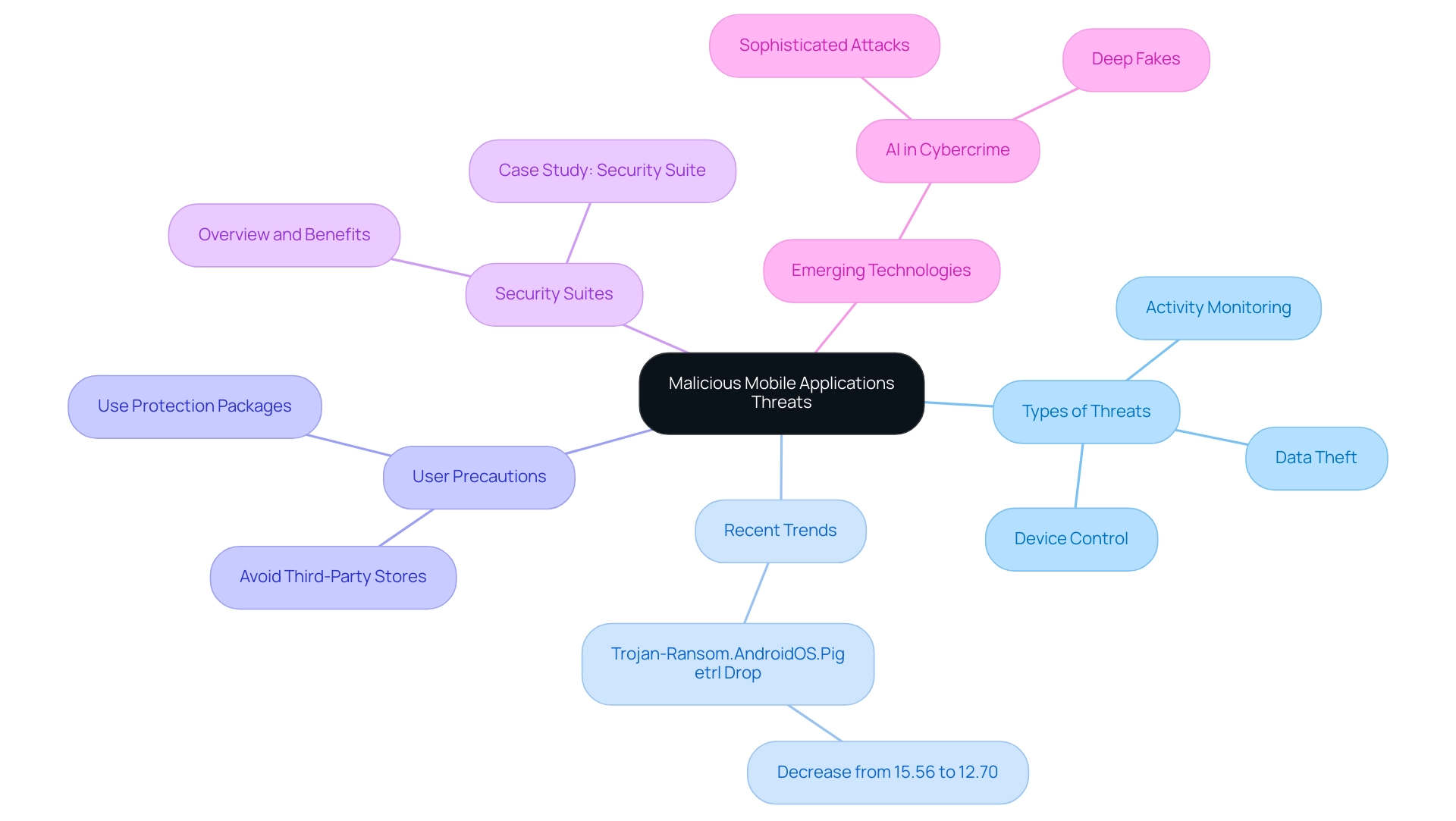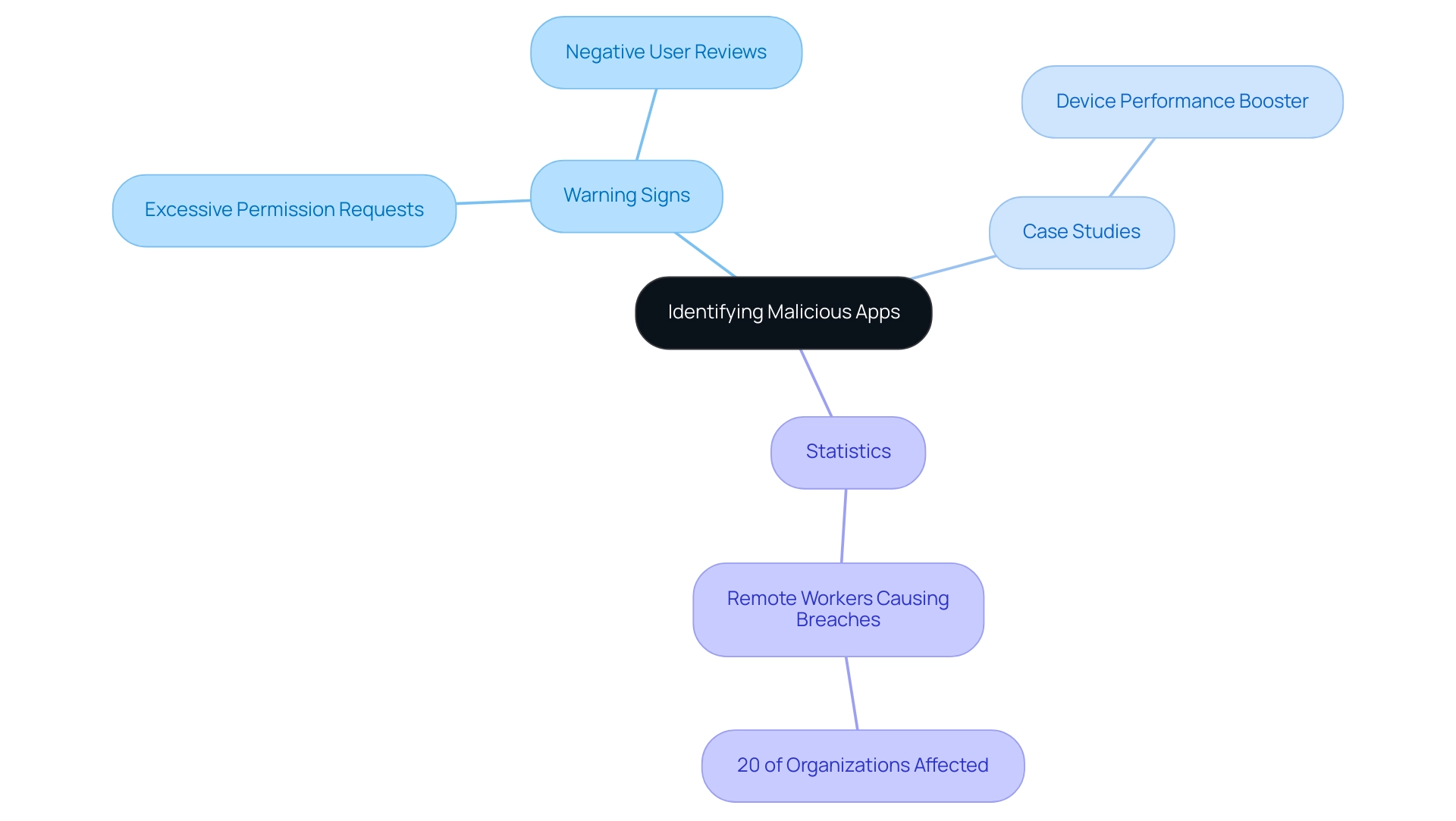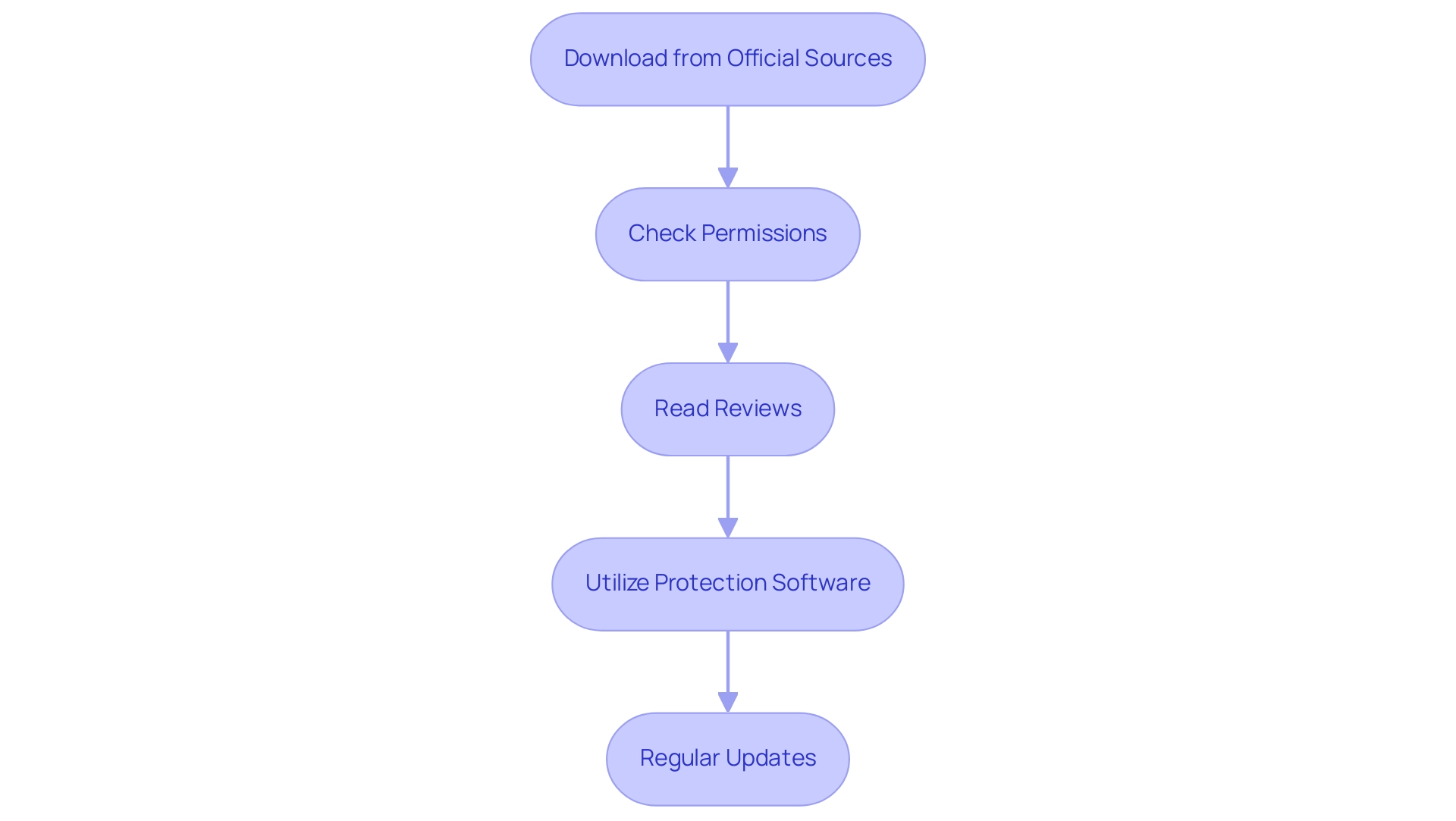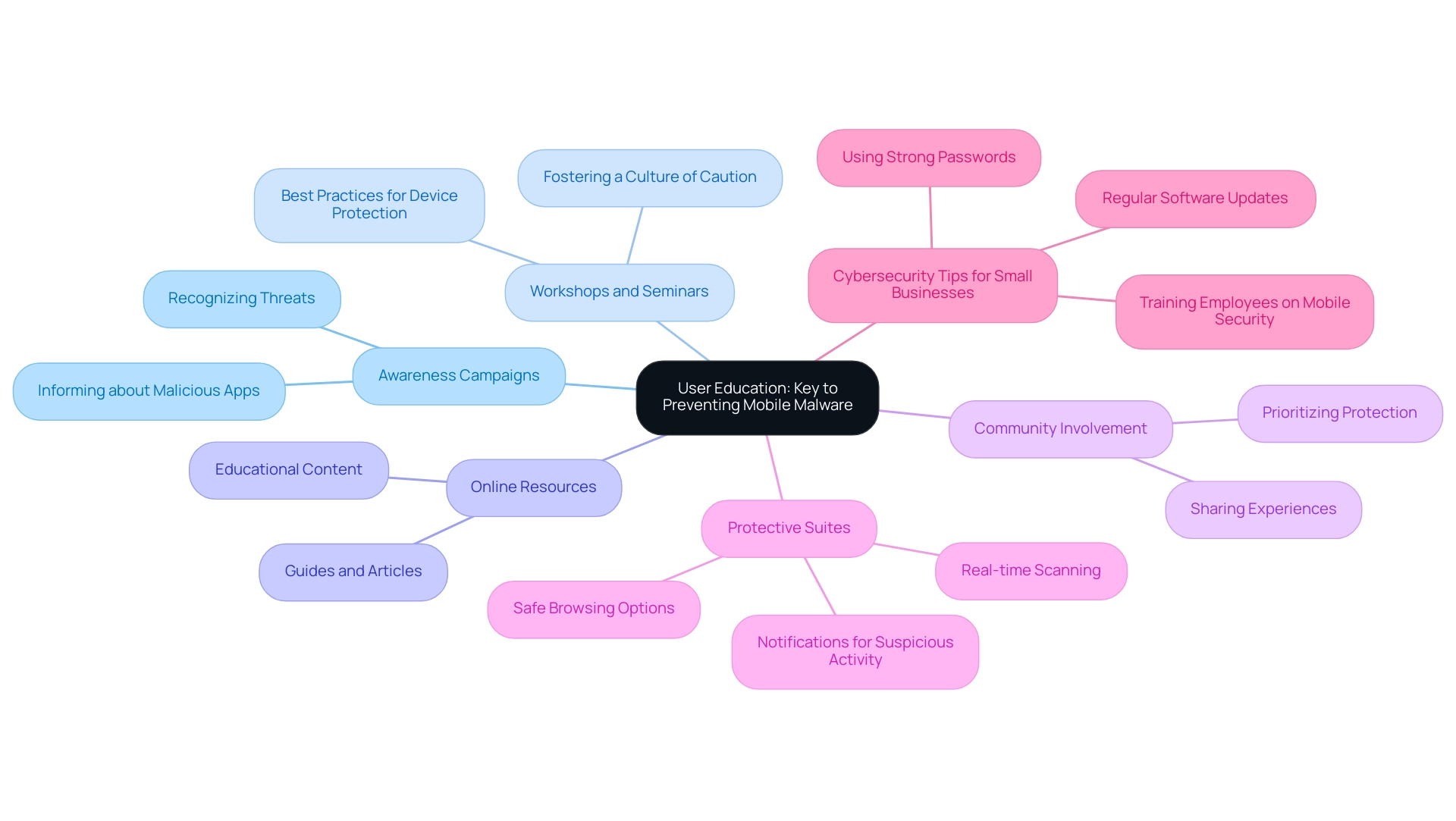Introduction
The surge in mobile device usage has opened the floodgates for a wave of malicious applications that threaten user security. These deceptive apps often masquerade as legitimate software, luring unsuspecting users into a false sense of security while they siphon off private information or even take control of devices.
With millions of downloads leading to significant data breaches and financial losses, the stakes have never been higher. As cybercriminals leverage advanced technologies like artificial intelligence to craft increasingly sophisticated attacks, it becomes imperative for users and businesses alike to understand the tactics employed by these threats.
This article delves into the alarming rise of malicious mobile applications, explores real-world case studies from platforms like Google Play Store, and offers expert strategies to protect against these pervasive risks. Through heightened awareness and proactive measures, individuals can fortify their defenses and safeguard their sensitive information in an ever-evolving digital landscape.
The Rise of Malicious Mobile Applications: Understanding the Threat
The dramatic increase in mobile device usage has paralleled a rise in malicious mobile apps, which often disguise themselves as legitimate software. These apps, known as malicious mobile apps, can steal sensitive information, monitor activity, or even gain complete control over devices. Recent estimates suggest that millions of users have unknowingly downloaded harmful software, resulting in significant data breaches and financial repercussions.
Significantly, the Trojan-Ransom.AndroidOS.Pigetrl variant has experienced a drop from 15.56% to 12.70%, demonstrating a trend in threats to portable devices. As Jessica Valasek Estenssoro notes,
Thanks to emerging technologies, particularly Artificial Intelligence (AI), cybercriminals can now create exponentially more sophisticated attacks, including audio and visual manipulation to produce convincing deep fakes.
This evolution in threat complexity necessitates a thorough understanding of how these systems are distributed and the strategies employed by cybercriminals. Users must exercise caution regarding app sources, as third-party app stores frequently present greater risks of downloading malicious mobile apps compared to established platforms like Google Play or the Apple App Store. To reduce these risks, companies can utilize protection packages, which provide extensive defense against various threats, including harmful software for portable devices.
The case study titled 'Security Suite: What Is It and How Can It Protect Your Business?' offers valuable insights into how such solutions can improve safety. By adopting a vigilant approach and utilizing effective security measures, businesses can better protect their sensitive information from the inherent dangers posed by harmful mobile software.

Identifying Malicious Apps: Case Studies from Google Play Store
The Google Play Store has seen a troubling rise in the number of malicious applications masquerading as legitimate tools. Notable instances include apps that purport to be photo editing or fitness tracking software but are, in reality, laden with adware and spyware. For example, one app promoted as a device performance booster was found to be extracting data while overwhelming individuals with intrusive advertisements.
Such cases serve as critical learning opportunities for identifying warning signs, including:
- Excessive permission requests
- Negative user reviews that hint at suspicious activity
According to recent statistics, remote workers have caused breaches in 20 percent of organizations during the pandemic, underscoring the urgency of staying informed about these threats. As Kev Dawson, Director at AO Kaspersky Lab, emphasizes, "Understanding the red flags of harmful software is crucial for maintaining security in our increasingly digital world."
By remaining vigilant and understanding these red flags, e-commerce professionals can better safeguard their digital environments. Furthermore, recent case studies have emphasized several malicious apps in the Google Play Store, offering additional context to the risks linked with seemingly legitimate software.

Protecting Yourself: Strategies to Avoid Malicious Mobile Apps
To effectively protect against harmful mobile software, implement the following expert strategies:
-
Download from Official Sources: Always source apps from reputable platforms like the Google Play Store or Apple App Store. These platforms employ rigorous screening processes to detect and eliminate malicious mobile apps, significantly reducing the risk of exposure.
-
Check Permissions: Prior to installation, carefully examine the permissions an app requests. For instance, if a simple calculator app seeks access to your location, this discrepancy raises immediate red flags about its legitimacy.
-
Read Reviews: User feedback can be invaluable. Examine reviews for signs of possible problems, especially those that mention data theft or performance glitches, as these can indicate underlying safety concerns.
-
Utilize Protection Software: Implementing trusted antivirus or anti-malware programs can enhance your defenses against malicious mobile apps, providing an extra layer of protection against harmful software.
-
Regular Updates: Ensure that your device’s operating system and applications are consistently updated. Regular updates include the most recent protection patches, strengthening your device against new vulnerabilities. As Tushar Pal, President and Co-Founder, notes, the importance of downloading apps from official sources cannot be overstated.
Adhering to these best practices not only aids in reducing risks but also aligns with the latest guidelines for app protection, as illustrated in the case study titled 'Application Protection Standards and Best Practices,' which highlights secure coding, robust authentication, and frequent updates. Moreover, the 2017 Equifax incident, where a Man-in-the-Middle attack exposed sensitive personal and financial information due to a failure to implement proper security measures, illustrates the potential consequences of neglecting such strategies.
For further assistance or information, quick contact options include multiple instances of 'Talk to our team' and the email [email protected].

User Education: The Key to Preventing Mobile Malware Infections
User education stands as a formidable line of defense against mobile malware, especially considering that approximately 16% of mobile malware manifests as malvertising. By promoting awareness of the traits of harmful software and the strategies used by cybercriminals, individuals can greatly reduce their risk of infection. Several key initiatives can be implemented to enhance education for individuals:
-
Awareness Campaigns: Organizations should spearhead campaigns aimed at informing individuals about the dangers associated with malicious mobile apps and equipping them with the skills to recognize potential threats.
-
Workshops and Seminars: Conducting workshops that emphasize best practices for portable device protection fosters a culture of caution and vigilance among individuals, empowering them with the knowledge to safeguard themselves effectively.
-
Online Resources: Offering extensive online materials, such as guides, articles, and educational content, ensures individuals have access to essential information required to navigate the app landscape safely.
-
Community Involvement: Motivating individuals to share their experiences and insights on application safety fosters a community of knowledgeable consumers who prioritize protection in their app interactions.
Alongside these initiatives, the application of protective suites can greatly enhance individual defenses against mobile malware. These suites offer protective features such as real-time scanning for malware, safe browsing options, and notifications for suspicious activity, which can further enhance individuals in their protective efforts.
As Becca Thies aptly states,
Implementing comprehensive protective strategies and enforcing best practices are essential for mitigating these risks and safeguarding sensitive corporate data.
By fostering a culture of education and utilizing tools such as protection suites, users become active participants in their own safety, making informed choices that not only protect their devices but also safeguard their sensitive data. Furthermore, small businesses should consider cybersecurity tips such as regularly updating software, using strong passwords, and training employees on mobile security best practices to enhance their overall security posture.

Conclusion
The alarming rise of malicious mobile applications underscores the critical importance of user awareness and proactive security measures. With cybercriminals leveraging sophisticated tactics, including artificial intelligence, the threat landscape is evolving rapidly. Millions have fallen prey to seemingly legitimate apps that compromise personal data, highlighting the need for vigilance when downloading software. By understanding the common characteristics of these deceptive applications, users can better navigate the digital environment and protect themselves from potential breaches.
Effective strategies for safeguarding against these threats include:
- Downloading apps solely from reputable sources
- Scrutinizing permission requests
- Regularly updating devices
User education plays a pivotal role in fostering a culture of security, empowering individuals to recognize and respond to malicious activities. Initiatives such as awareness campaigns and workshops can significantly enhance users' ability to identify risks, creating a more informed user base capable of defending against mobile malware.
In a world where mobile devices are integral to daily life, the responsibility for security lies with both users and organizations. By adopting best practices and leveraging security solutions, individuals can fortify their defenses against the pervasive risks posed by malicious applications. Prioritizing security not only protects sensitive information but also contributes to a safer digital landscape for everyone. As the threat of mobile malware continues to grow, remaining informed and vigilant is essential for safeguarding personal and corporate data alike.





